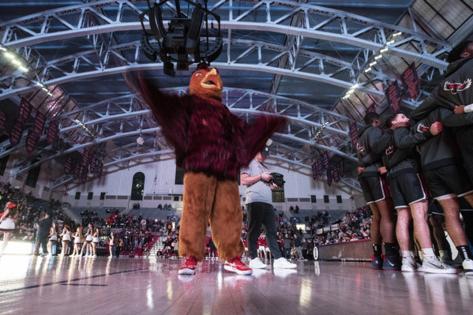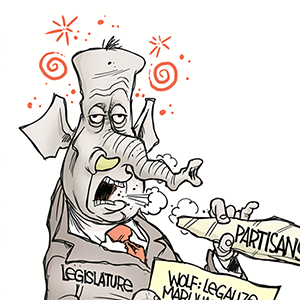Mike Sielski: Sixers have become stale under Josh Harris. Here's how Philly's WNBA team can avoid the same fate.
Published in Basketball
PHILADELPHIA — The announcement had been made and the applause had subsided and it was official that Philadelphia would have a WNBA franchise in 2030, and now it was time for Josh Harris to do his thing — to get everyone wincing at his words and hoping he’d stop talking and wondering how this billionaire businessman who is such a killer behind the scenes always manages to be so cringey and phony in front of an audience.
Down in Washington, over his first two years as an NFL owner, Harris has reaped the benefits of not being Daniel Snyder. He has cleared the lowest of bars for people to be satisfied, even overjoyed, with his brief stewardship of the Commanders. Here, though, despite the money and resources Harris has poured into the 76ers to improve their infrastructure and their roster, the franchise hasn’t felt so irrelevant in years.
It’s not just Joel Embiid’s suspect health and star-crossed career. It’s not just the terrible Paul George signing and last season’s 24-58 record. There’s a soullessness to the Sixers’ operation, a failure to connect, a history of talking big and coming up small. The gulf between the organization and the fan base has rarely felt wider, and that press conference last Monday in Manhattan was a reminder that, with Harris in charge, the same problems could end up plaguing Philly’s WNBA team.
“For me and the community,” Harris said, “bringing the WNBA to Philly wasn’t just nice to have. It was an obligation.”
Sure. Sure it was. The cause was oh-so important to Harris that, over the first 13 years of his 14-year Sixers ownership tenure, he gave no indication that he had any desire to have the WNBA expand to Philadelphia. Funny how the deal came down only after NBA commissioner Adam Silver brokered an agreement between Harris-Blitzer and Comcast Spectacor to settle their very bitter, very public battle over 10th and Market, Chinatown, and the South Philadelphia sports complex. Funny how the timing happened to work out.
Harris was no man on a mission to deliver Philly a franchise it has long deserved. This was less a passion play for him and his partners than it was just part of the cost of getting out of the Wells Fargo Center and into a new arena.
Now they have to make this franchise work, and understand: It will take work. The worst thing that Harris and the others in charge of the club could do would be to take any immediate and enthusiastic support for granted, to assume that the team’s honeymoon — and it’s all honeymoon for at least another five years — will linger once games tip off.
A WNBA team isn’t a charity. It isn’t primarily a vessel for gender equality or any other social cause or campaign. It is a professional franchise at the highest level of its sport, and it eventually will have to win to draw people in and keep them in the fold.
More to the point, a WNBA team is a business, and Harris is so bad as a franchise spokesperson and the Sixers have lost so much credibility within the market that the WNBA club’s leadership will have to put the highest priority on courting the city’s basketball community.
Where to begin? Here: by embracing the rich history of women’s basketball — and basketball generally — in the Philadelphia region. Yes, this team will enjoy playing in a state-of-the-art arena, and Harris surely will want to show off his pleasure palace at every opportunity. But the club would do well to schedule at least one game in its first or second season at the Palestra, where an average WNBA crowd would fill the gym.
Yes, women’s basketball is better than ever — stronger, faster athletes with more refined skills who receive outstanding coaching — and should only continue evolving and improving. But why not pay respect to the sport’s pioneers, so many of whom have Philadelphia-area ties? Why not hold open practices at Immaculata (home of the Mighty Macs dynasty of the early 1970s), at West Chester (which hosted the first women’s national championship tournament), at Cheyney (where John Chaney and Vivian Stringer coached … and which will soon open a new sports complex), and at Hank Gathers Recreation Center at 25th and Diamond (the corner where Dawn Staley got her start)?
Yes, women’s basketball is more popular than ever, and social media’s reach and increased mainstream media coverage have at least contributed to, and at most driven, that growth. But committed people at the sport’s grassroots level are the ones who made it possible for a WNBA team to exist and thrive here: the coaches, the directors, and the athletes at high schools and middle schools, in CYO leagues, and in AAU programs throughout the city and suburbs.
So the club should reach out to those people. Have players and coaches speak at those schools and those camps. Sponsor tournaments. Establish that emotional, personalized connection between the team and those who are primed to support it.
A quarter-century ago, the Sixers had someone who did exactly that. They had someone who was always feeling great, who climbed the Walt Whitman Bridge in a pep-rally-like PR stunt, who talked up the team and fired up fans and celebrated every moment of Sixers success like he was a member of the masses.
Josh Harris needs to find his own Pat Croce for Philadelphia’s WNBA franchise. He’s fortunate that there are plenty of candidates, because he sure isn’t one of them.
____
©2025 The Philadelphia Inquirer. Visit inquirer.com. Distributed by Tribune Content Agency, LLC.







Comments